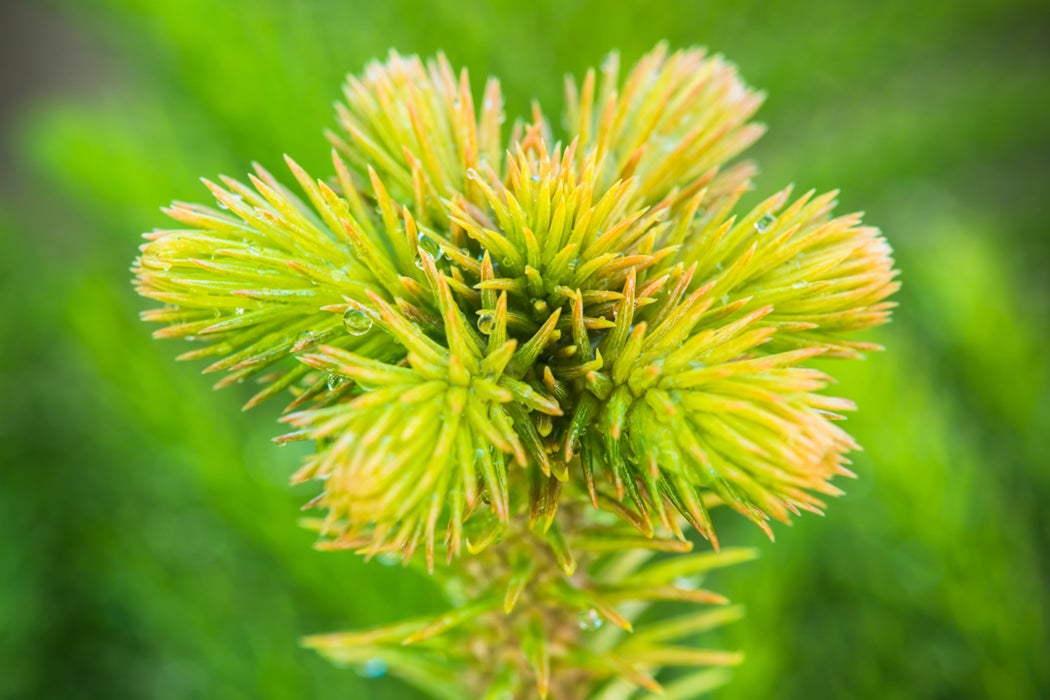In 1994, an Australian park employee was exploring Wollemi National Park, a rugged area in the Blue Mountains west of Sydney. Hiking in a remote canyon, David Noble saw a tree that he did not recognize. Little did he know that his mystery tree would soon become an international sensation and a find of enormous scientific interest. He had found a living copse of Wollemia nobilis, the Wollemi Pine.
While it is a conifer, you would not recognize Wollemi Pine as such. Instead of needles, the tree has thin, frond-like leaves more reminiscent of a fern, except that the tree has a woody trunk and grows to more than a hundred feet tall. Its odd appearance initially confounded botanists, until by coincidence some fossil specimens of an early Cretaceous plant were described in Queensland.
The fossils were an excellent match for the Wollemi Pine. Additional fossils discovered closer to Sydney confirmed that this was an ancient tree, virtually unchanged since herbivorous dinosaurs last munched on them. Paleontologists soon realized that Wollemi Pine was once common across Australia and parts of then-connected Antarctica until environmental changes reduced them to their final, tiny population. Unlike most conifers, Wollemi Pines tend to grow in clonal shoots, like aspens. That means the existing trees are almost genetically identical, and have remained so for a very long time. Dinosaurs might not just have eaten Wollemi trees; they may have grazed on something genetically linked to these exact trees.
The Australian authorities now had a conservation emergency on their hands. They were faced with a tree of tremendous public interest and a critically small, genetically homogeneous population. Park authorities acted quickly, keeping the trees’ location a highly guarded secret and imposing severe penalties for harming a living tree.
Get Our Newsletter
Despite those measures, the population was still vulnerable to disease, fire, and other disaster. The tree became a celebrity. Specimens were taken to different botanical gardens around Australia. To protect them from thieves, the early touring plants were placed behind steel bars. Given the small source population, however, it was not possible to protect the species from extinction using natural seedlings alone. To ensure its survival, a massive effort began to understand the reproduction of Wollemi Pines in order to propagate and grow the trees on a wide scale.
The effort was successful. Wollemi Pines are enormous and won’t fit in the average backyard. However, they do seem to take well as house plants, despite being finicky and requiring proper conditions and care to thrive. A young Wollemi pine can now be purchased over the internet for around $70 US. The last wild survivors are still highly vulnerable, but their descendants are distributed in gardens and yards around the world.







